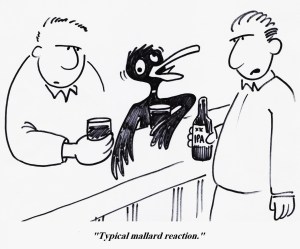Why we favor direct heating
23 August 2014
We decided to fire the iStill One with direct gas heating. Our other iStills are directly heated as well.
There is a very basic reason for that. No, there is two reasons, actually! Let me elaborate and start with the first reason. One I already shared, so we can keep that one short. Here we go.
A directly heated still asks for less material. Less material means more of the energy you put into the distillation process ... actually goes into that distillation process, instead of it heating-up your rig and warming-up your distillery. You don't have a still just because you need a device to heat-up your distillery, right? No, you need it to distill. And as good as possible, please! Less material equals better performance at lower energy costs.
But there is a second reason why direct heating during distillation runs pays off. On a wash relatively rich on grain (fruit, molasses) particles, direct heating - much more than indirect heating - helps trigger the Maillard Reaction.
The Maillard Reaction is a reaction that takes place in sugars (residual or unfermentable sugars, in the case of distilling). The main conditions for the reaction to occur are that those sugars need to be in a wet environment and that the temperature, while as hot as possible, does not exceed 100 degrees C. If it would exceed 100 degrees Centigrade, another, much less favorable chemical reaction takes place: caramalization.
Where caramalization hardly creates taste, the Maillard Reaction does. Does it? More than that! The Maillard Reaction creates what's called a "Taste Cascade", where hundreds of new flavor components develop, thus making your whiskey, rum or brandy more complex.
It's the Maillard Reaction that actually explains why my Rye Bread Whiskey Recipe is as good as it is, even though it is "just" a sugar head whiskey. Rye bread is cooked for prolongued periods of time (up to 13 hours) at sub boiling point (of water, not of mash) temperatures.
The Maillard Reaction also explains why Scottish Single Malt whisky is so complex, even though it is made from just one grain and it isn't even distilled (or fermented!) on the grain. The careful malt drying process (mostly over peat) does not just add peaty tastes, it also starts a partial Maillard Reaction ...
Do you have an iStill? Are you considering buying a still? If you are after taste, direct heating is the way to go. Do you remember me talking about Hungary's national drink Pálinka, and how this fruit brandy pretty much disqualifies other drinks, from other parts of the world? Direct heating is the trick ...
And when it is purity you want? A vodka? Make sure you distill a clear wash. No particles present means no Maillard Reaction can take place. And - even with some grain particles present - just add Cleaning Sections (to the iStill One) or choose the Pure Mode (for the iStill 250). The extra distillation cycles will take care of the additional taste direct heating, and the consecutive Maillard Reaction, might give you!
www.iStill.eu
Reactions
Add your comment
All reactions ()
Loading comments..
